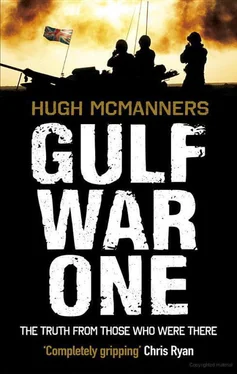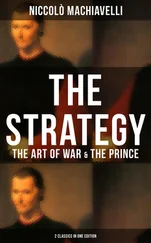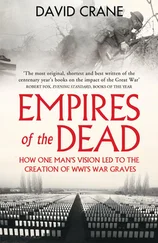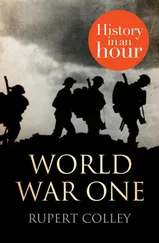The background to the Kuwait invasion is complicated and stretches back a century to various British political and military involvements in Iraq; and, of course, various American alliances in the oil region. Indeed, six days after Kuwait’s full independence from Britain in 1961, the then Iraq President Brigadier Kassim announced Iraq’s ownership of Kuwait. The prompt arrival of 42 Commando, then the 24 Infantry Brigade (Operation Vantage) prevented an Iraqi invasion.
Saddam Hussein’s secular Ba’ath Party had taken power in Iraq by coup d’état in 1968, Hussein himself rising to become vice president, and in 1979, president and head of the Army and Revolutionary Command Council. The USA supported Iran until 1979, when the West-leaning Shah of Iran was deposed and the Shi’a Muslim ayatollahs took power in Iran. The USA then abandoned Iran believing the Islamic state threatened American national security. The USA preferred Saddam Hussein’s secular government, and so supported his ‘Mother of all Battles’ – Iraq’s ‘First’ Gulf War, a very bloody 12-year stalemate with Iran, on the grounds that it prevented Iran dominating the oil region.
So for the previous decade before invading Kuwait, Iraq had enjoyed the support of the United States of America, as well as receiving trade and military support from other world powers, particularly Russia and France, who had both supplied equipment to Saddam’s 260,000 battle-hardened troops. Saddam’s MiG fighters were modern, able to outmanoeuvre for example the Royal Air Force’s Jaguars. His regime possessed biological and chemical weapons, which he was ready, able and very willing to use, and his nuclear development programme was very close to producing results. Saddam was warned by the USA and Britain that, if he used these weapons, to expect a nuclear response. Western missiles are more sophisticated, accurate and reliable, with controllable kilotonnages which, being more useable, are more of a threat. This proved a textbook nuclear deterrence. Nevertheless, in 1990 Iraq’s armed forces were by far the oil region’s dominant military power.
Saddam’s invasion of Kuwait bore similarity to his war with Iran. In 1980, following a series of border disputes but without warning, Iraq invaded Iran, hoping to take advantage of its internal chaos following the revolution. However, after several months of fighting, Iran took back its lost territory, then went on the offensive. Half a million people were killed in battles resembling the First World War: large-scale trench warfare, human wave attacks and the extensive use by Iraq of chemical weapons.
Throughout this earlier war, the US had played down Iraq’s use of chemical weapons, preventing the United Nations from condemning Iraq, despite the deaths of thousands of Iraqi Kurdish civilians and militia. US President Ronald Reagan formalised the USA’s policy of support for Iraq in a National Security Decision Directive in June 1982. The war had serious adverse effects on shipping in the Gulf, as well as the economies of the whole region and also western nations. The land war declined into a stalemate as neither side was able to bring to bear overwhelming amounts of armoured artillery or air power, with the well-equipped and more professional Iraqi army cancelled out by Iran’s huge numbers of infantry.
In 1987 the UN presented a US-sponsored peace plan. At Iraq’s acceptance of the plan, Iran attacked the south of Iraq. Iraq recaptured this territory, then attacked northern Iran, the Iraqi air force using cyanide in a bombing attack on the northern Kurdish village of Zardan. Following this attack, Iran accepted the UN peace plan. The Iraqi air force then supported an attack by the Iranian mujahideen – a leftist, militant anti-government group – into western Iran, but following American pressure then withdrew. The mujahideen were left to be massacred by Iranian paratroopers, and the First Gulf War ended.
Emboldened by continuing American support and funded by oil revenues, Saddam and his all-powerful Ba’ath party developed the idea that Iraq could become the leader of the Arab world with, for example, a seat on the UN Security Council. The Ba’ath movement is secular with Marxist origins, preaches Arab unity, is especially strong in Syria where it’s named the ‘Socialist Arab Rebirth Party’, and is split into factions. The Iraqi branch, particularly, is strongly anti-Persian.
Iraq’s national aspirations were on a very large scale, including leading an alleged coalition to dismember Saudi Arabia, with the southernmost parts going to Yemen, and King Hussein of Jordan re-inheriting the Hejaz, the region from which his Hashemite dynasty originated, and which includes the holy cities of Mecca and Medina; plus a financial pay-off to Egypt because there wouldn’t be any territory to offer the guardian of the Suez route to the Mediterranean. The remainder, including a hefty slice of the oil fields, would go to Iraq. A senior government figure told me that he couldn’t verify that this was Saddam’s intention; however, ‘for a number of years a very strong and long-standing bitterness was held by the Saudis toward Jordan over allegations of Jordan’s relationship with Iraq, as the Saudis believed Jordan had been party to this grander scheme.’ He didn’t want to be quoted by name, as he said the subject was still ‘too sensitive’.
Aspects of this plot, which is one of many plans over the years to dismember and reallocate various Arab states (and Israel), with equally as many authors including Britain and the USA, were to continue after the Gulf War, with Jordan helping Iraq with sanction-busting trade routes through her north-eastern border.
During the eight-year war with Iran, Saddam Hussein had run up huge debts – $17bn from Kuwait’s ruling al-Sabah family – and felt pressurised to settle up. By 1990, even Iraq’s substantial oil revenue could no longer service this debt. Kuwait refused Saddam’s demands to cancel the debt and instead was party to agreeing lower oil prices, further disadvantaging Iraq. With the dissent of northern-based Kurdish separatists causing internal problems, and his country’s economy crippled by an annual inflation figure of forty per cent, Saddam felt he had to do something. He accused Kuwait of stealing $2.4 billion of Iraqi oil by slant drilling from across the border, which they were apparently doing using very sophisticated American equipment, whilst Iraq could not drill.
Kuwait and its ruling al-Sabah family, now incredibly rich – to an extent from undercutting other oil states and selling oil cheaply to Japan and the USA, then investing heavily in American stocks and shares – was not well regarded by other Arab states. There are stories from this time of a US ambassador telling Saddam that if he invaded the less-than-democratic state of Kuwait, the US would not interfere. The conspiracy-theory rationale for this conversation was that America was losing its influence in the Persian Gulf, and so wanted a crisis from which it could ‘rescue’ the oil states. Saddam Hussein concluded that the Americans and other Gulf states might at least acquiesce to his taking over the emirate, and so amassed his troops on the border.
According to King Hussein of Jordan, the ruling Kuwaiti families privately agreed to Saddam’s terms. They would forgive Iraq’s debt and each pay $10bn in war debts to Iraq in return for its fighting the Shi’a on behalf of Sunni Arabs. However, the Saudi foreign minister Sheikh Sabeh Ahmed al-Jaber al-Sabah announced publicly that Saddam would be offered only $500,000, and Saudi Arabia would call in the Americans. Two days later Saddam invaded.
CHAPTER 1
ALLY TO ADVERSARY
Iraq’s invasion was condemned by the United Nations within hours – before dawn on 2 August. The US Marines and 82nd (US) Airborne Division were despatched to defend Saudi Arabia. US Secretary of State James Baker began months of travelling, gathering political, financial and military support from the international community. When on 14 September Britain pledged an armoured brigade, President Bush described it as ‘the icing on the cake’.
Читать дальше












